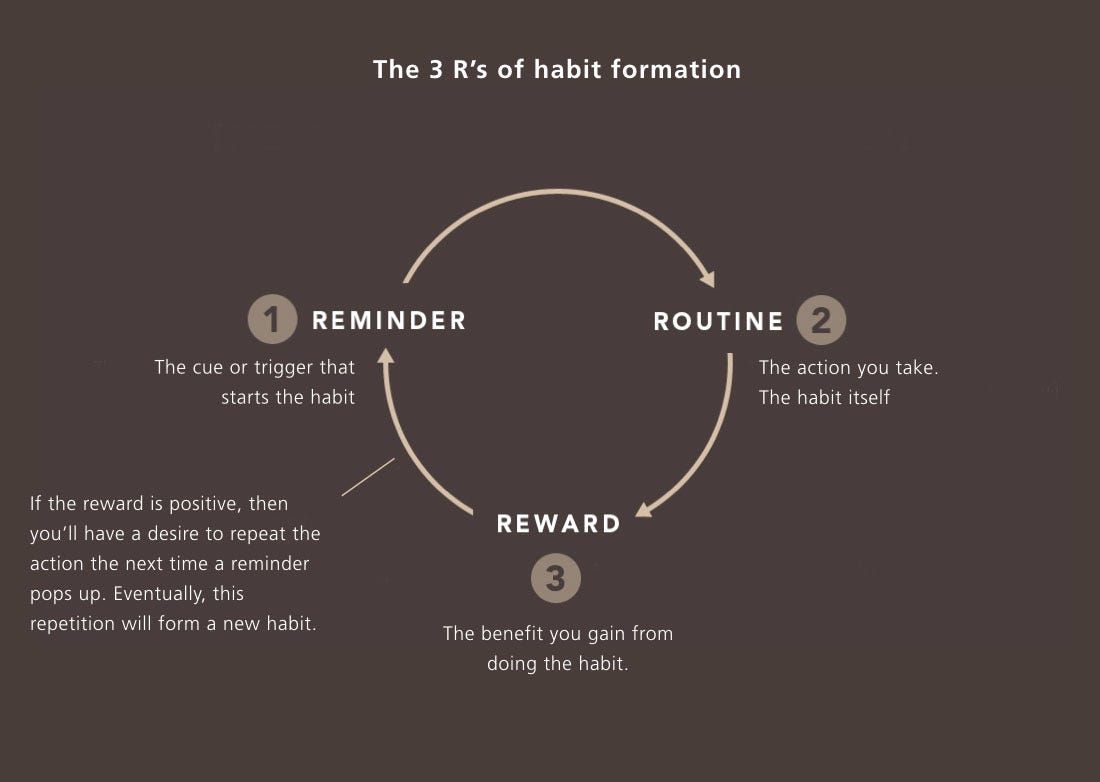With Covid-19 wreaking havoc and leaving a wake of disaster in its path, many of us find ourselves having to improvise and drastically change our perspectives and behaviour over the past year. While the forced shift in how we humans see the world, whether it has to do with relationships, society, our role in nature and the environment, or our health and income, over a prolonged period these new perspectives and behaviours become ‘habits’.
Consequently, humans are creatures of habit, and each person’s new-found perspectives and routine that were formed during the past year may very well become irreversible… or in other word ‘Sticky Habits’. The world itself is going through massive change, and the by-product of the synthesis (of the introduction) of Covid-19 into our ecosystem would essentially be the creation of a new world. For humans, and individuals that would mean new ways of life, thinking, perceptions and habits.
In this article, we will be exploring the concept of habit ‘stickiness’ focusing mainly on the marketing and business side of things. Hence, we would also touch on product stickiness as well.
What is Habit? The Psychology of Routine
Habit is a learned as oppose to innate behaviour, which over time requires little to no thought process. These learned behaviours are formed over time when we repetitively go through the same motions, reactions and thought processes (beliefs). For example, such as brushing your teeth, your exercise routine, or even how you react in difficult situations, the tendency to bully versus playing victim, how you do your grocery shopping and how attached you are to your mobile devices.
In other words, humans are creature of routine and habits. A lot of what we do on a day-to-day basis is subconscious, it’s almost as though we’re on auto-pilot.
Now apply this to the new-founded and improvised behaviours during the Coronavirus pandemic. If you’ve switched to online shopping during stay-at-homes and lockdowns, over an extended period of time this behaviour solidifies. And once lockdowns are lifted, chances are, you’re going to continue shopping online more than in-store, since the newly acquired habit runs subconsciously.
What is Habit Stickiness?
It’s basically how set and stone a certain habit is formed and how difficult it is to remove or change. For instance, if you’re so used to using digital assistants and voice command, imagine the frustration, if you were to have to go without for a few days. And instead, resort to good ‘ol type-searching for information and tapping through your phone menus. Now extend that from a few days to a few months before switching back to the use of digital assistants. You’ll find that each time you pick up your phone, you’ll start typing and tapping, having to consciously remind yourself, you can switch back to using voice command. And it goes on like this for a while.
Some habits take much longer to be removed or replaced, while some habits are more easily moulded and changed. When you think of product stickiness and marketing psychology, you can imagine most vices tend to be quite sticky. Besides certain product’s natural stickiness, in terms of consumer psychology, if the perceived cost of change (whether it’s actual monetary cost or in the form of efforts) exceeds the benefit of changing certain products, then these products are definitely sticky. Quite obviously because you will not find strong enough reason or motivation to change products.

For instance, if you get used to the app interface of a certain grocery store, and you have redeemable points, lots of unused coupons, and have connected the app with your e-wallet, then the cost of changing to a new grocery store may just be too high. In this way, the product and service is sticky.
What is Product Stickiness?
A lot of products and services today, have some sort of membership schemes and tiers. With each tier providing a little more benefit. These tiers are most commonly referred to as bronze, silver and gold members. This is a marketing technique that helps with building customer loyalty, positive brand perception, as well as creating natural brand ambassadors through the concept of social currency, and what not. But no matter what you want to call it, it comes down to psychology, and it’s about making the product and service that little bit more sticky.
So, when doing competitive research, are the formidable competitors those that are better at acquiring new customers and closing high monthly sales figures, or is it about which competitor is better at crafting sticky products and services?
What does all this have to do with consumers and marketing in the post-Covid world?
Apply what you now understand about how habits are formed to the changing consumer behaviour the past year. We can very well assume that many of the new consumer behaviour, whether they were by choice or out of a lack thereof due to the situation, these behaviour are solidifying into habits.
Meaning, while a lot of people probably look forward to their next in-store shopping experience, it is a bit like wanting to revisit some country we’ve been on holiday at. Hence, even when lockdowns are lifted, or the situation gets better, we can expect a lot of people would also continue to shop online.

A lot of households also find themselves having to be more frugal, or having more time to learn new skills indoors. Thus, other learned habits such as cooking your own meals instead of ordering take outs, or sewing and gardening would also follow each person as they come out of their bunkers.
With this in mind, marketers can make some good presumptions on how best to go about marketing in the new world. We may as well scrap every consumer research we have done in the past, and really do some more qualitative research to understand the emerging consumer habits and psychology.
Emerging behaviour differ by generation.

Do more qualitative research to understand the emerging consumer habits and psychology.

